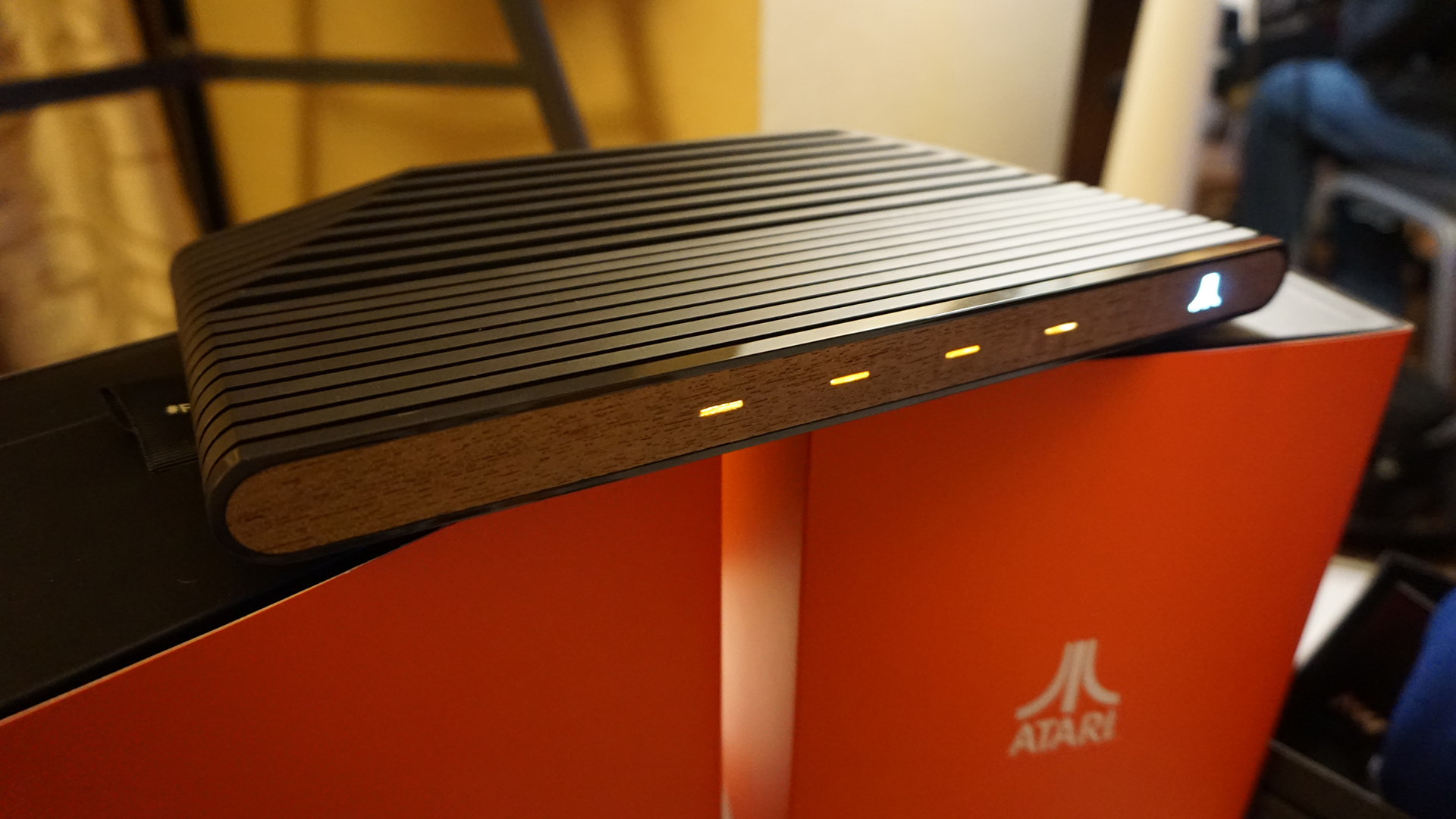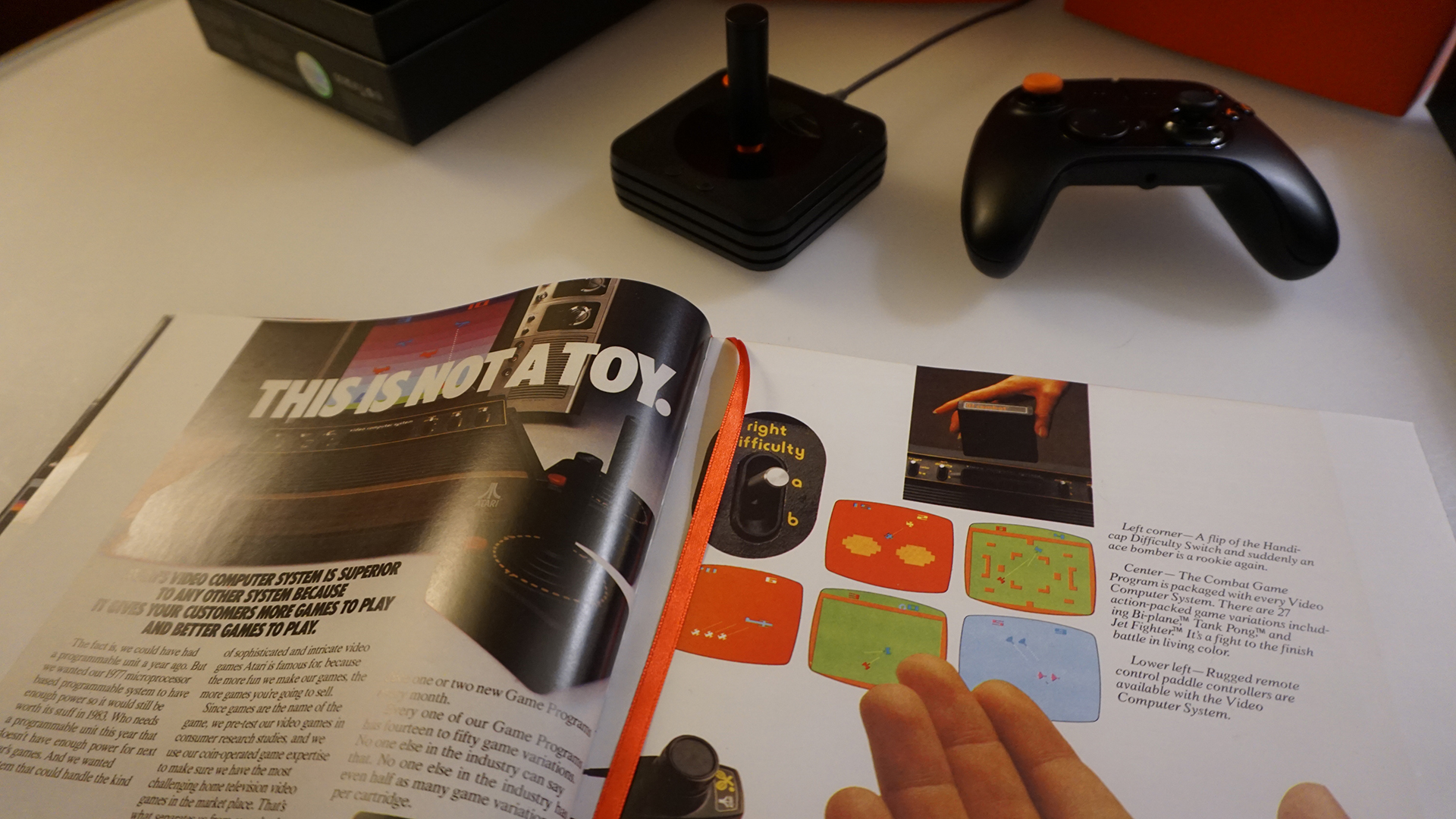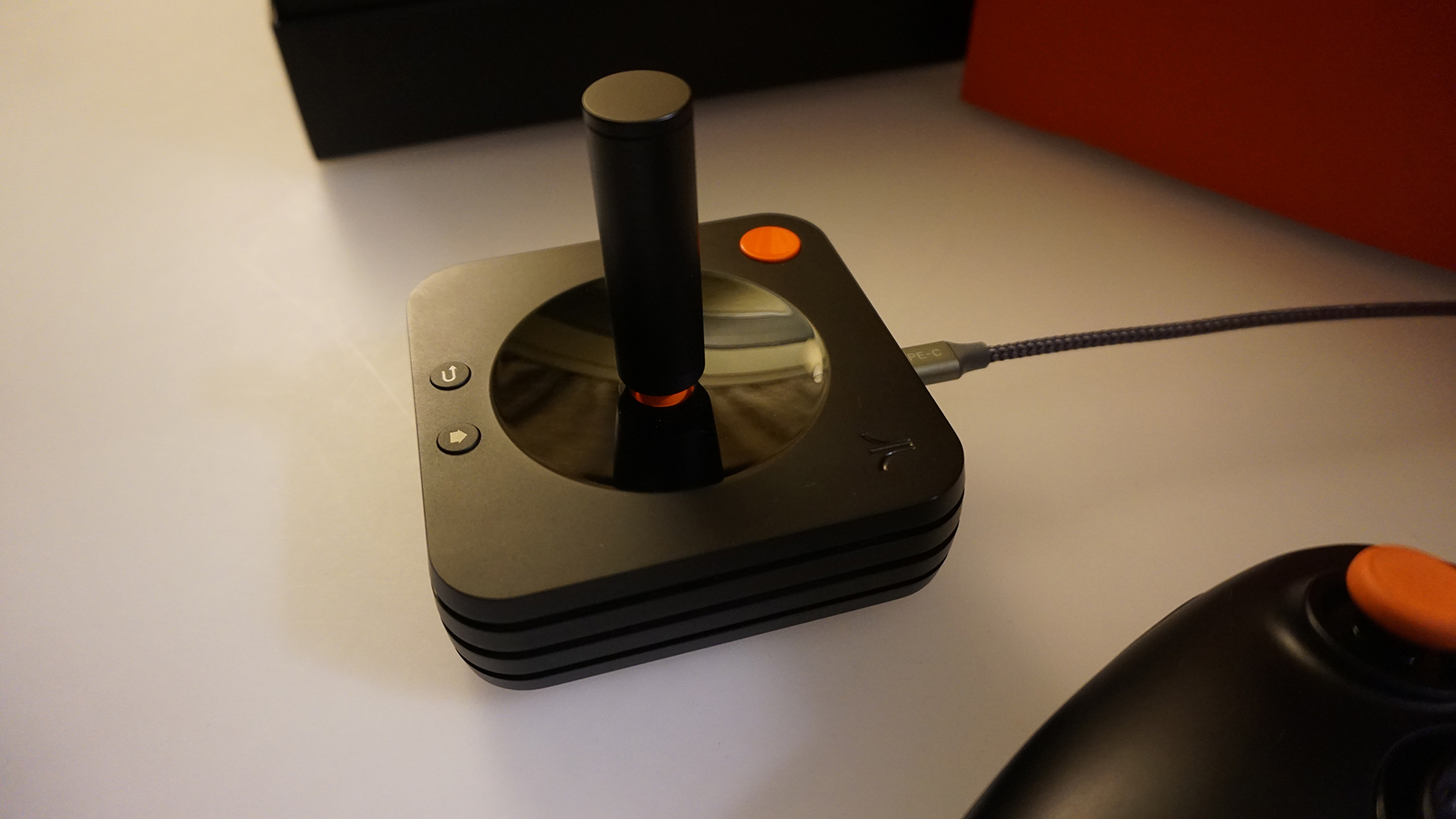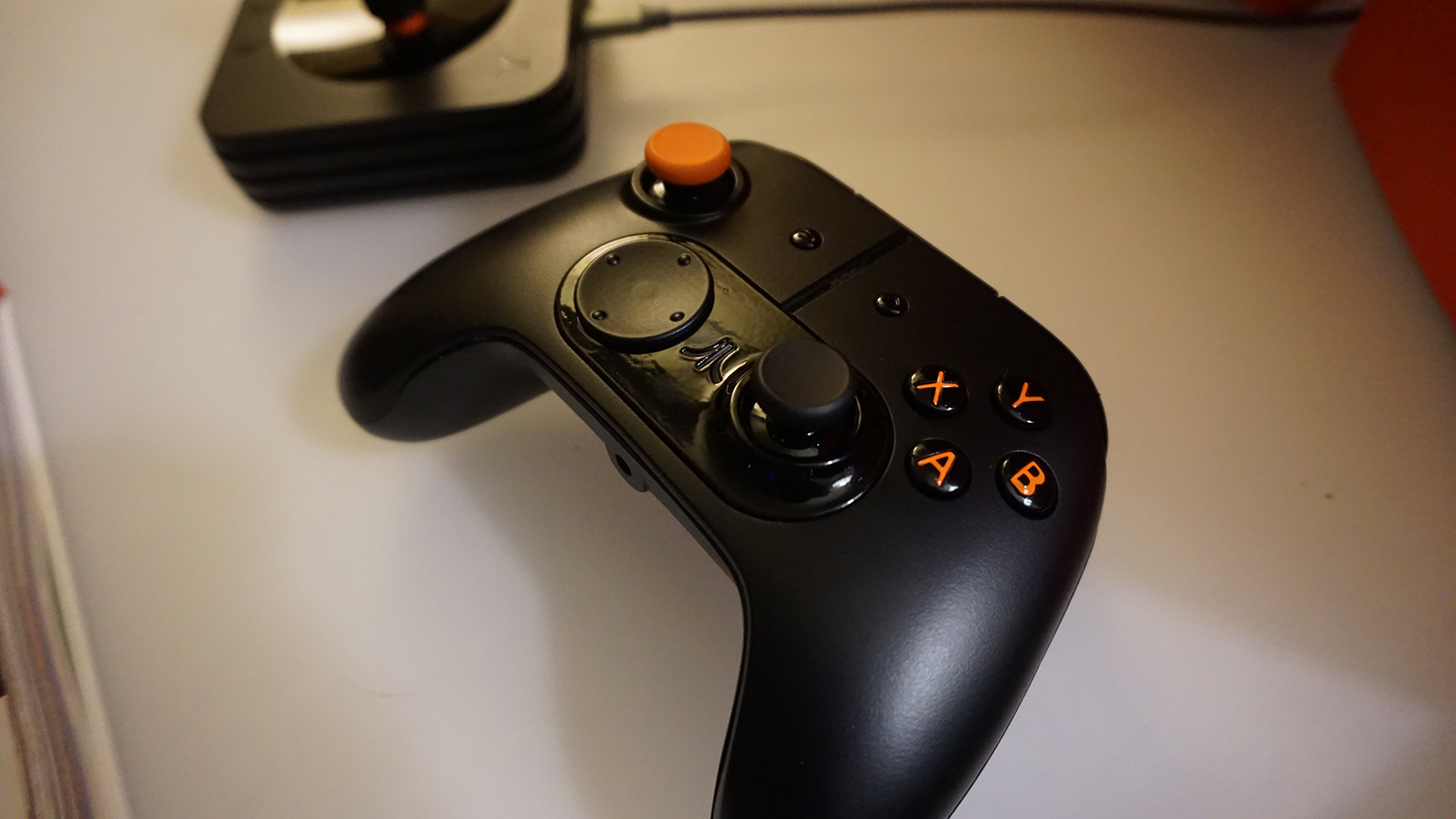
It’s fair to say that Atari caused quite a stir last year when it announced its first console in over 20 years, the Atari VCS – or, as it was known back then, simply the Ataribox.
It was a bold move and not something you’d expect to see from a company that has bought, sold, resurrected and revamped a half dozen times since its original founder left the company in 1978.
Choosing to move forward with the expensive, capricious venture of developing a console, has been – for lack of a better analogy – two steps forward, one step back ever since.
Through the stumbling blocks, though, the company has produced a working sample – a Linux-based PC that incorporates an undisclosed AMD processor, an unspecified amount of memory and a yet-to-be-confirmed hard drive. It will focus on games, as you’d expect any console to do, but Atari hasn’t determined which games, exactly, that would include.
It will offer voice commands built into the console itself through a system Atari just isn’t ready to disclose and, according to most of the executive leadership team at Atari, will likely be closer to an Atari-branded PC than a traditional console with a bespoke interface.
Beyond those few vague details, things become very murky.

“It might play the original Call of Duty but it might not play the latest Call of Duty, we’re just not sure yet,” says Michael Arzt, COO of Atari. “I can’t give you what percentage we are to completion … that’s something that’s very subjective and we’d rather underpromise and overdeliver.”
Sign up for breaking news, reviews, opinion, top tech deals, and more.
“It will be somewhere in between an Nvidia Shield and the Nintendo Switch,” Frederic Chesnai, Atari’s CEO, assures us. “In terms of specs, obviously, not in functionality.”
It’s like this with every specific question you ask. There’s an answer, but it’s vague, given without specifics intentionally so that Atari can pivot should things not fall into place.
“It’s still moving forward,” Arzt says, “It’s going to be great. We will try to share things when we can share things.” Then, a few minutes later, he adds, “But there’s still a lot of work to do.”
So what has actually been completed?
Walking away from our meeting with Atari it seems as though the only three aspects to have truly and fully been locked down are the name, Atari VCS, the outer shell of the console and where Atari sees this fitting into the crowded market of micro-consoles, streaming video boxes, Steam Machines, consoles and low-end PCs – somewhere smack-dab in the middle. Well, hopefully, at least.
“There have been some pain points with how people use some of these platforms. The Atari VCS will seek to alleviate those,” Arzt says. Though, when asked how exactly it would achieve that, Arzt could only say that it’s part of the platform’s secret sauce that it will reveal at some point down the road when the company feels more comfortable.
The better answer from Arzt and Chesnai is that it’s not necessarily a console or a streaming box, but an Atari-branded PC for the living room. There will be some bespoke elements to it, like a storefront that Atari will use to sell games from its collection, but beyond that, most of the functionality you’d expect a console to have – like video streaming – will likely be derived from the VCS’ ability to access a web browser built into the PC.

We were able to see the prototype of the console for the first time at GDC. As Atari teased in press images back in December, the system is a blend of faux-wood front paneling and a curvaceous plastic shell with row upon row of cut-away plastic. Around the back you can find USB, ethernet and HDMI ports, though, Atari says you’ll be able to connect to the system withmost modern technologies, including Bluetooth and built-in Wi-Fi.
Also unveiled for the first time at GDC were the two new controllers – one very modern, almost Xbox-like gamepad and a more traditional Atari 2600-style joystick. Arzt says that they’re working with “well-known” peripheral makers on these products and offered that the joystick on the table at Atari’s hotel suite was a working engineering sample. (The box and the second controller were not working, unfortunately, but both Arzt and Chesnai says that working samples of those exist, though neither are ready to be sent out to developers yet.)
The last component that Atari appears to be committed to at this point is voice control. Without it, Chesnai feels like the system would be obsolete in the next five years as more and more voice functionality becomes common not only in consoles, but in your TV, too.
As far as rock-solid, definite components of the Atari VCS go, that’s all we’ve got for now.

The road-map for the Atari VCS
While the specifics of the Atari VCS are still as nebulous as they were the day the console was announced, one thing that has grown over time is Atari’s claim of what the system will be capable of doing when it arrives.
In the perfect world, when Atari VCS launches, the company would like it to be a multimedia machine that seamlessly integrates into your living room. It will offer you a catalogue of games that you might’ve grown up with or played on an arcade machine, alongside new titles that Atari would build themselves. In this vision, there are platform-exclusives that will help differentiate the VCS from a standard, Linux-based PC, and third-party titles – some of which you might’ve played elsewhere before.
You’ll be able to use your console as a streaming device to watch 4K content from YouTube, Netflix and others, all of which will have been optimized for the system – even if they might not get their own dedicated app straightaway.

In this scenario, you’ll be using the joypad for some games, the controller for others and if at any point you feel the urge to switch over to a standard mouse and keyboard, that option will be made available to you – it is, after all, a Linux-based PC.
The console that Atari envisions will cost somewhere between $250 and $300 (£175 to £200, AU$300 to AU$400), a price that the company will have firmed up once the specs are finalized.
The path from where the console is now to where they want it to be is long, Arzt and Chesnai agree, but not impossible. The vision for creating the console was the hardest part, and now it just comes down to putting in the work to get the system from Point A to Point B.

A tale of two consoles
It’s hard to reconcile the differences between the platform Atari envisions and the one we saw at this week’s Game Developers Conference. Some of the seeds of Atari’s ideas are there, sure, but at this point they’re just seeds that aren’t anywhere close to bearing fruit.
What might appear on the outside as a well-oiled machine, looks, sounds and seems to me like a passion project undertaken by a company who cares deeply about engaging a new audience – one who expects games (and game consoles) to match what they’re used to seeing on modern consoles and PCs.
A very large part of that feeling is that where Microsoft, Nintendo and Sony might have development staff of hundreds of engineers, designers and programmers working around the clock in all corners of the globe on their next big gaming console, Atari has only a few dozen – including the contractors hired to help bring the console to life.
The other part is that Atari itself isn’t very confident in the final product.
One of the reasons the team didn’t push forward with pre-orders back in December is that they weren’t ready to start holding onto money with the expectation that there would, at some point in the near future, be a final playable product.

I’m not audacious enough of a journalist to claim that the console is going to live up to the plans Atari has laid on the table for its wonderfully weird console, nor am I pessimistic enough to say that it's vaporware. It’s something in between, and appears to teeter back and forth depending on the questions you ask on a given day.
The answer to what the Atari VCS is – really and truly – will just have to wait.
We're on the ground at the Game Developers Conference (GDC) in San Francisco this week covering the latest in gaming, from mobile and consoles to VR headsets. Catch up on all the latest from GDC 2018 so far!

Nick Pino is Managing Editor, TV and AV for TechRadar's sister site, Tom's Guide. Previously, he was the Senior Editor of Home Entertainment at TechRadar, covering TVs, headphones, speakers, video games, VR and streaming devices. He's also written for GamesRadar+, Official Xbox Magazine, PC Gamer and other outlets over the last decade, and he has a degree in computer science he's not using if anyone wants it.